Background information
Hartley Bay is located 125 km south of Prince Rupert, in Gitga’at territory. Gitga’at lands and waters encompass approximately 7500 square kilometres. The Gitga’ata people have inhabited the region for thousands of years.
The Gitga’at First Nation is one of seven Tsimshian nations located in the central and northern coast of B.C., and one of five groups among the “Allied Tribes” in the region that also include the Lax Kw'alaams; Metlakatla, Kitkatla and Kitasoo Xai’xais First Nations.
European contact
In 1793, Captain George Vancouver anchored near a village site on Gil Island, near where the Queen of the North sank (see below).
Fur trade era (1770s-1849)
In 1831, the Hudson’s Bay Company established a fort settlement on the Nass River to compete with Americans involved in the Maritime Fur Trade. In 1834, the settlement was moved to Lax Kw’alaams, near Prince Rupert. The fort was known as Fort Simpson, and the village that grew nearby was called Port Simpson. The body of water where Lax Kw’alaams and the village was situated is also called Port Simpson.
William Duncan
In 1857, an Anglican missionary named William Duncan arrived at Lax Kw’alaams. By the 1840s the fort had become a centre of trade for thousands of Indigenous peoples in the region, especially the Tsimshian. The name “Tsimshian” is derived from a similar Tshimshian-language word literally meaning, “inside the Skeena River.” William Duncan learned the Tsimshian language and preached Christianity to Tsimshian peoples who resided in the area, including the Gitga’ata. Duncan criticized the use of alcohol by HBC employees, and what he described as their “loose morals.”
Near Lax Kw’alaams, Duncan established Metlakatla—a utopian Christian community with 60 Tsimshian followers, among them the Gitga’ata. By 1862, several hundred Tsimshians had joined the community and it continued to grow. Duncan’s unique brand of Christianity led to his being expelled from the Church Missionary Society in 1881 and founding the “Independent Native Church.”
Duncan decided to found a new utopian community in Alaska. He requested and received permission from the U.S. government to create an Indian reservation on Annette Island, in the Tlingit territory of the Tongass Indigenous peoples. He led 800 Tsimshians by canoe from “Old” Metlakatla to “New” Metlakatla in 1887. The community became a thriving hub of economic activity with a sawmill and cannery, among other ventures.
Hartley Bay
Many Gitga’ata chose not to move to New Metlakatla, instead returning to their traditional territory and calling it Hartley Bay (previously known as Txalgiw or Txalgiu). The village of Hartley Bay now resides 19 km from the original village site, known as Laxgalts’ap (Old Town). Approximately 130 people now live in Hartley Bay. Many Gitga’ata also live in Prince Rupert, as well as Terrace, Kitimat, Prince George and on Vancouver Island.
Over time, Hartley Bay has diversified from mainly being a fishing village to also offering eco-tourist and aquaculture operations, as well as running the Gitga’at Guardians environmental stewardship program.
Several tour operators work with the Gitga’at Nation for guided wilderness tours. Members of the Gitga’at Nation include experienced wilderness guides and conservation advocates.
Coastal Guardian Watchmen Network
The Gitga’at Nation is a member organization of the Coastal Guardian Watchmen Network, a consortium of Indigenous land and water protectors overseeing stewardship of their protected territories.
Queen of the North
On March 22, 2006 at some time between midnight and 1:00 am, a BC Ferries ship named the Queen of the North ran aground and sank near Gil Island with 101 passengers on board. The ship made regular voyages through the Inside Passage from Port Hardy and Prince Rupert. Community members from Hartley Bay used fishing boats and recreational vessels to rescue survivors throughout the night; two passengers died.
The vessel contained 225 000 litres of diesel fuel, 15 000 litres of light oil, 3200 litres of hydraulic fluid and 3200 litres of stern tube oil. Much of the diesel evaporated after the spill.
An Incident Command Post was established at Prince Rupert, and an Incident Management Team placed over 150 m of booms in four separate areas to contain fuel released from the vessel. A Shoreline Cleanup and Assessement Team (SCAT) was activated, and a long-term environmental monitoring plan was established with input from Hartley Bay and Kikatla First Nations.
Enbridge Northern Gateway Pipeline
In 2016, the Canadian federal government approved a moratorium on crude oil tankers in B.C.’s north coast. For ten years, the Gitga’at First Nation opposed an initiative launched by Enbridge Inc. to run a crude oil pipeline from Athabasca, Alberta to Kitimat. The decision is a huge victory for the community, which would have seen oil tankers transporting crude oil within two km of Hartley Bay. The community opposed the pipeline and oil transport in the region for fear of oil spills.
Getting to Hartley Bay
Hartley Bay can only be accessed by plane or boat.
Plane
Inland Air Charters Ltd. offers scheduled flights from Prince Rupert to Hartley Bay.
Boat
North Co Corp offers two weekly trips from Prince Rupert to Hartley Bay.
Tour operators
Great Bear Wild
https://normhann.com/tours/great-bear-wild/
Ocean Adventures
https://www.oceanadventures.bc.ca
Spirit Bears of the Great Bear Rainforest (Art of Seeing)
https://artofseeing.com/spirit-bears-of-the-great-bear-rainforest-photography-workshop-and-tour
Spirit Bears 2022 (The Wildlife Collective)
https://thewildlifecollective.com/photo-tours/spirit-bears-2022/
Spirit Bear Tours (Tim Irvin, Ecologist & Guide)
https://www.timirvin.com/spirit-bear-tours/
Wild Outdoor Photography with Michael Bertelsen
https://www.wildoutdoors.ca/wildlife-workshops-tours/spirit-bear-photography-tour/
Additional information
About Us (Gitga’at Nation)
http://gitgaatnation.ca/about-us/
Explore more Communities found in the Great Bear Rainforest.

